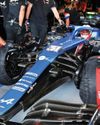
Electrified motorsport is here to stay, whether one is talking hybrids in Formula 1, the World Endurance Championship (and soon the World Rally Championship) or pure electric, pioneered by Formula E. This will soon be joined by series such as Extreme E, electric Touring Cars and Rallycross.
However, much like traditional internal combusion (IC) racing, there is no such thing as a standard architecture for electric motors, and in this article we will take a look at the two main topologies, axial flux and radial flux, exploring how and why they are different and their various pros and cons.
All rotating electric motors share two common components, a rotor and a stator. The stator is fixed and the rotor, as its name suggests, rotates. Commonly, the rotor sits inside the stator, though there are also external rotor motors, such as those found on some in-wheel applications.
Permanent magnets
For the purposes of racing, it is only worth considering permanent magnet machines, so induction motors will be left for production cars. In a permanent magnet motor, the rotor is constructed from permanent magnets, and these can be either surface mounted or internal. Surface mounting is more efficient, but creates a more complex problem when it comes to securing them at high rpm.
The principle of operation is based on the interaction between the rotating magnetic field of the stator (made up of multiple coils, which are energised) and the constant magnetic field of the rotor. According to Ampere’s law, this interaction creates a torque reaction, causing the motor to rotate. The speed of the motor is controlled by changing the magnetic field of the stator and, in the case of traction motors, via a variable frequency drive.
This story is from the February 2021 edition of Racecar Engineering.
Start your 7-day Magzter GOLD free trial to access thousands of curated premium stories, and 8,500+ magazines and newspapers.
Already a subscriber ? Sign In
This story is from the February 2021 edition of Racecar Engineering.
Start your 7-day Magzter GOLD free trial to access thousands of curated premium stories, and 8,500+ magazines and newspapers.
Already a subscriber? Sign In
Talk the torque
More thoughts on in-wheel motors and their effects on twisting force
Rolling about
An explanation of the limitations of a previous load transfer article, bringing jacking forces into the mix
F1 breaks schedule records
The FIA has confirmed no fewer than 23 races on the 2022 Formula 1 World Championship schedule, the highest number of grands prix ever to be held in a single season, and that has led to criticism from some teams that will be on the road for eight months.

Under pressure
Toyota may have finished first and second at Le Mans this year, but the effort required to overcome a fuel delivery problem and finish with both cars was Herculean
Physics at work
Dutch company, Intrax, offers Racecar Engineering an insight into the technologies it employs to optimise its suspension products
Williams' 2030 ambition
Williams Racing has committed to becoming climate positive by 2030 as part of an all-new sustainability strategy.
Diff'rent strokes
Racecar looks at the different types of mechanical differential, their benefits and limitations
Das Boot
A curious Twitter exchange fired up a unique, hydrogen-powered, cross-country project that will contest the Baja 1000 in November 2022

Air born
Every racecar engineer's dream is a blank sheet of paper design. When Hoonigan and Subaru approached Vermont Sportscars about building the next generation of Gymkhana racer, that's just what the company was given

Remote control
Called variously ‘virtual garages’, ‘mission control’ or ‘race support rooms’ is the future of race engineering sitting in the warm back at HQ?